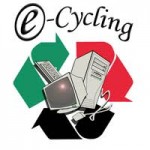 Tomorrow New Orleanians are encouraged to drop off electronics for a recycling event brought to you by LG Electronics USA. In exchange each participant will receive a $50-$150 Best Buy instant savings coupon, that can ONLY be used in the purchase of a qualifiable ENERGY STAR LG flat-panel tv and can ONLY be redeemed between the dates of March 25th and April 7th.?á The ÔÇ£Do March RightÔÇØ themed event is so convenient that participants donÔÇÖt even have to get out of their cars to donate. Recycling reduces the amount of hazardous waste in landfills as well as cut back on ?áthe extracting of raw materials from the earth.
Tomorrow New Orleanians are encouraged to drop off electronics for a recycling event brought to you by LG Electronics USA. In exchange each participant will receive a $50-$150 Best Buy instant savings coupon, that can ONLY be used in the purchase of a qualifiable ENERGY STAR LG flat-panel tv and can ONLY be redeemed between the dates of March 25th and April 7th.?á The ÔÇ£Do March RightÔÇØ themed event is so convenient that participants donÔÇÖt even have to get out of their cars to donate. Recycling reduces the amount of hazardous waste in landfills as well as cut back on ?áthe extracting of raw materials from the earth.
Acceptable Items include (but are not limited to):
?áComputers ÔÇô CPUs
Computer monitors
Printers
Fax machines
Televisions
VCRs
Steroes
Home and Cell Phones
GPS devices
Digital Cameras
For a full list of acceptable items and items that are not accepted, please see the following links:
http://www.prnewswire.com/news-releases/lg-invites-new-orleanians-to-recycle-old-electronics-save-on-new-purchases-as-2012-ncaa-mens-final-four-approaches-143629626.html
http://www.waste-management-world.com/index/from-the-wires/wire-news-display/1628755896.html
You can’t help but notice the striking sculptures by Enrique Alferez around town. Born in Mexico, he moved here in 1929 and made New Orleans his home for the next 70 years.?á The Ogden Museum of Art is currently hosting an exhibit celebrating the prolific artist.
The Created World of Enrique Alf?®rez runs through April 2nd, 2012. But if you can’t make it to the Ogden, stretch your legs and come visit the Library Commons where you can view The Conquest of Yellow Fever.
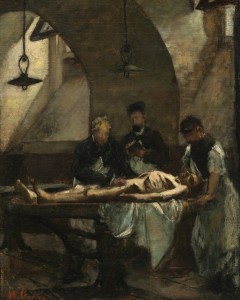
Henri Gervex, Study for "Autopsy at the H??tel-Dieu"
Looking to liven up a presentation with a bit of art?
The National Gallery of Art has created NGA Images, repository of open access digital images. The database includes the 50 most frequently requested pieces from the museum, including works by Monet, Cassat, Renoir, Vermeer and many others.
If fine art isn’t what you’re looking for, the Library also has a list of Image databases which are comprised of or include image files. Many of these files are copyrighted so check what is considered to be fair use for each one.
 ScienceDirect and Scopus are upgrading ?áthis weekend (March 17-18, 2012). While we expect things to go smoothly, it is possible that users may experience temporary service disruptions on these dates.
ScienceDirect and Scopus are upgrading ?áthis weekend (March 17-18, 2012). While we expect things to go smoothly, it is possible that users may experience temporary service disruptions on these dates.
If you have access problems please call us at 568-6100, and we will try to get you the article another way.
More info
The American Dietetic Association is celebrating March 2012 as National Nutrition Month! Check out their website at www.eatright.org for lots of recipes, ideas, and info, and investigate these delicious recent publications on nutrition on display here in the Isch?® Library (on the third floor next to the Library elevator):

- Behan E. Therapeutic Nutrition: a guide to patient education (2006).
- CB Cataldo, LK DeBruyne & EN Whitney. Nutrition & Diet Therapy: principles & practice (2003).
- Dudek SG. Nutrition Essentials for Nursing Practice (2006).
- Escott-Stump S. Nutrition & Diagnosis-Related Care (2008).
- Gershwin ME, JB German & CL Keen. Nutrition & Immunology: principles & practice (2000).
- Grodner M, S Long & BC Walkingshaw. Foundations & Clinical Applications of Nutrition: a nursing approach (2007).
- Hark L, & G Morrison. Medical Nutrition & Disease: a case-based approach (2003).
- Katz DL, & RSC Friedman. Nutrition in Clinical Practice: a comprehensive, evidence-based manual for the practitioner (2008).
- Kaufman M. Nutrition in Promoting the Public’s Health: strategies, principles, & practices (2007).
- Mangels R, VK Messina & M Messina. The Dietitian’s Guide to Vegetarian Diets: issues & applications (2004).
- Nehlig A. Coffee, Tea, Chocolate, & the Brain (2004).
- Owen AL, PL Splett, & GM Owen. Nutrition in the Community: the art & science of delivering services (1999).
- Snetselaar LG. Nutrition Counseling Skills for the Nutrition Care Process (2009).
- Stipanuk MH. Biochemical, Physiological, & Molecular Aspects of Human Nutrition (2006).
- Whitney EN. Nutrition for Health & Health Care (2007).
- Whitney EN, CB Cataldo & SR Rolfes. Understanding Normal & Clinical Nutrition (2002).
- Williams SR. Williams’ Basic Nutrition & Diet Therapy (2005).
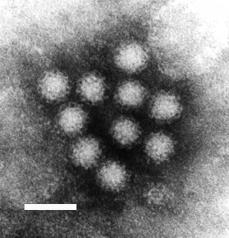
Photo Credit: F.P. Williams, U.S. EPA
Various local news agencies are reporting that the LSU baseball team was missing 16 players for their game last night due to stomach flu.
Coincidentally, the CDC is featuring Norovirus Surveillance on their webpage yesterday. We published a publication alert post in November about Norovirus in NBA players.
The following statement was issued on Thursday, March 8th?áby John Ball, Assoc. Vice Chancellor for Property & Facilities regarding weekend changes in the Roman Street Garage:
“From Friday, March 9th at 6:00 PM, until Monday, March 12th at 6:30 AM,
the left exit lane, closest to the booth in the Roman St. Garage, will
be closed to allow repair work to the drive surface.?á Faculty, students
and staff using the garage after 6:00 pm on Friday should enter the
garage using the regular weekday garage entrance that is closer to
Tulane Avenue.?á That entrance will remain open all weekend during these
repairs.”
Campus News | Permalink | Comments Off on Roman St. Garage Entrance | Posted Friday, March 9, 2012 by Claire Mayeux
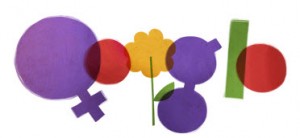
Search Google today? This particular Google Doodle recognizes International Women’s Day, an annual event on March 8th. It is a global day celebrating the economic, political and social achievements of women past, present and future.?áThe?áfirst International Women’s Day event was run in 1911. In some places like China, Russia, Vietnam and Bulgaria, International Women’s Day is a national holiday.
So beyond the fact that women make up over 50% of the world’s population and 90% of the Library Staff, why should we care? Susan Blumenthal, M.D., Public Health Editor at HuffPost and Former U.S. Assistant Surgeon General, has an excellent essay today reflecting upon the changes she has seen in women’s health. ?áWomen’s Health: Decades Later, What’s Still Neglected.
For example, did you know:
- A Congressional Report in 1990 revealed that only 13 percent of the National Institutes of Health budget was spent on women’s health research
- Until fairly recently in our nation’s history (1993), women were largely excluded from being subjects in medical research and data was not analyzed for sex and gender differences
- Women represent only 12 percent of the Deans of U.S. medical schools, fewer than 27 percent of tenured professors and 13 percent of the over 2070 Departmental Chairs in our nation’s medical schools
The good news is, things are changing. The?áNational Women’s Health?áInformation Center (NWHIC) ?áis available ?áthrough a toll free telephone number (800-944-WOMAN) and ?áat?áwww.womenshealth.gov. It?áprovides consumers, health professionals, and researchers with free information and suport for ?áa broad range of women’s health issues. Changing the Face of Medicine?á is an online exhibit from the NIH which explores?áthe many ways that women have influenced and enhanced the practice of medicine. ?áSo the next time someone asks “Where are the girls?” you can show them.
Much like the Carnival Advisory we wrote about last month, the Centers for Disease Control has posted a Spring Break Travel Advisory. I wonder how many Spring Breakers even know that the CDC exists?
Eight recent articles authored by LSUHSC-NO researchers are on display in the Library. The publications on are on view in the LibraryÔÇÖs Reference area (near the Library elevator) on the third floor of the Resource Center Building, and are also part of the LibraryÔÇÖs Faculty Publications Database.
The Faculty Publications Database includes publications authored by at least one member of the LSUHSC-New Orleans faculty, 1998 ÔÇô present. Access to this database is available to the public. The database is linked from the Library web page?áhere. This page includes a handy link to a?áPDF?áof the monthly bibliography of display articles. To add your faculty publications, or for questions about this database, contact?áKathy Kerdolff.
LSUHSC-NO authors are shown in bold print:
- Chen K, McAleer JP, Lin Y, Paterson DL, Zheng M, Alcorn JF, Weaver CT, Kolls JK. “Th17 cells mediate clade-specific, serotype-independent mucosal immunity.” Immunity. 2011; 35(6): 997-1009.
- Li YY, Alexandrov PN, Pogue AI, Zhao Y, Bhattacharjee S, Lukiw WJ. “miRNA-155 upregulation and complement factor H deficits in down’s syndrome.” NeuroReport. 2012; 23(3):168-173.
- Liu SJ, Savtchouk I. “Ca 2+ permeable AMPA receptors switch allegiances: Mechanisms and consequences.” Journal of Physiology. 2012; 590(1): 13-20.
- Melvan JN, Siggins RW, Stanford WL, Porretta C, Nelson S, Bagby GJ, Zhang P. “Alcohol impairs the myeloid proliferative response to bacteremia in mice by inhibiting the stem cell antigen-1/ERK pathway.” Journal of Immunology. 2012; 188(4): 1961-1969.
- Russo VM, Graziano F, Peris-Celda M, Russo A, Ulm AJ. “The V2 segment of the vertebral artery: Anatomical considerations and surgical implications – laboratory investigation.” Journal of Neurosurgery. Spine. 2011; 15(6): 610-619.
- Taylor T, Zitzmann MB. “Dipylidium caninum in a 4-month old male.” Clinical Laboratory Science. 2011; 24(4): 212-214.
- Xiao L, Gao L, Lazartigues E, Zucker IH. “Brain-selective overexpression of angiotensin-converting enzyme 2 attenuates sympathetic nerve activity and enhances baroreflex function in chronic heart failure.” Hypertension. 2011; 58(6): 1057-1065.
- Yano J, Noverr MC, Fidel PL, Jr. “Cytokines in the host response to candida vaginitis: Identifying a role for non-classical immune mediators, S100 alarmins.” Cytokine. 2012; 58(1): 118-128.
Today is the fifth International Rare Disease Day which will be recognized and celebrated in over 40 countries worldwide.
Started on February 29, 2008 by EUROIDS (The European Organisation for Rare Diseases) this day is used for gaining individual hope and political awareness for those who suffer with rare diseases around the globe.
Events scheduled for this year focus on ÔÇ£solidarityÔÇØ with the slogan ÔÇ£rare but strong together.ÔÇØ To learn more click here.
Below is a list of Rare Disease Communities that exist (found on http://www.rarediseasecommunities.org/en), but others can be found through an available search engine.
- Alkaptonuria (AKU)
- Alternating Hemiplegia
- Atypical Hemolytic Uremic Syn.
- Beh?ºetÔÇÖs Syndrome
- CAPS
- CDG
- Cystinosis
- Dravet syndrome
- Ehlers-Danlos syndrome (EDS)
- Epidermolysis Bullosa
- Familial Mediterranean Fever
- Glut1 DS
- Hereditary Spastic Paraplegia
- Waldenstrom macroglobulinemia
- Multiple Myeloma
- Moebius syndrome
- Paraneoplastic Neurological Syn.
- Von Hippel-Lindau
Americans who turn up in the emergency room to get dental care aren’t lost, they’re probably just running out of options.
According to a new report from the Pew Center on the States more than 800,000 visits to the ER in 2009 were for toothaches and other avoidable dental ailments.
What effect will this have on the future of dental care??á It really depends on who you are talking to:
This is NPR’s view.
This is the ADA’s view.
The study rooms on the Isché Library 4th floor will be unavailable from 8AM – 3PM on Monday and Tuesday (February 27 & 28, 2012) while we install new window treatments. (Don’t get excited, it’s just mini-blinds)
We apologize for the inconvenience.
Ever wonder why fashion models and fitness buffs are perpetually dining on fish and veggies??á
Because?áSeafood is healthy!
Not only is it full of protein, Omega 3s, vitamins and minerals- it typically contains fewer calories and fat grams than other protein sources (i.e. poultry and eggs).
With all of this positive information letÔÇÖs take a minute to ponder how lucky we are to live in New Orleans, Louisiana- a veritable wonderland of seafood!
OK. Minute is up.
Now itÔÇÖs time to take action and join the Louisiana Seafood Fitness Challenge!
Started by Bobby Hebert (former New Orleans Saints Quarterback) and his WWWL SportÔÇÖs Talk co-host (Deke Bellavia), Louisiana Seafood Fitness Challenge ?áwill follow these men as they see who can lose the most weight in 40 days simply by incorporating more seafood into their diet. The best part? Anyone can join this challenge.
Take the pledge, submit your healthiest seafood recipe and?áshare your inspirational seafood success story all in the name of encouraging all of?áLouisiana to eat their way to health . . . with Louisiana Seafood of course!
Do you have problem viewing Scopus on computers that are running Windows 7 and use the IE 9?
Here is how you can fix it:
From IE 9 browser go to Tools and then click on Compatibility view settings and check Display all websites in Compatibility View.
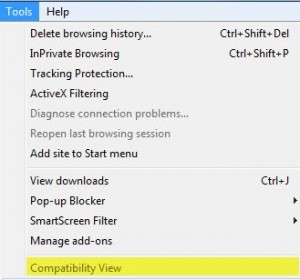 ?á
?á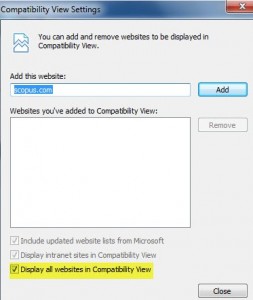
We’ve been in contact with Elsevier about this issue and hope it will be corrected in the future.
 Tomorrow New Orleanians are encouraged to drop off electronics for a recycling event brought to you by LG Electronics USA. In exchange each participant will receive a $50-$150 Best Buy instant savings coupon, that can ONLY be used in the purchase of a qualifiable ENERGY STAR LG flat-panel tv and can ONLY be redeemed between the dates of March 25th and April 7th.?á The ÔÇ£Do March RightÔÇØ themed event is so convenient that participants donÔÇÖt even have to get out of their cars to donate. Recycling reduces the amount of hazardous waste in landfills as well as cut back on ?áthe extracting of raw materials from the earth.
Tomorrow New Orleanians are encouraged to drop off electronics for a recycling event brought to you by LG Electronics USA. In exchange each participant will receive a $50-$150 Best Buy instant savings coupon, that can ONLY be used in the purchase of a qualifiable ENERGY STAR LG flat-panel tv and can ONLY be redeemed between the dates of March 25th and April 7th.?á The ÔÇ£Do March RightÔÇØ themed event is so convenient that participants donÔÇÖt even have to get out of their cars to donate. Recycling reduces the amount of hazardous waste in landfills as well as cut back on ?áthe extracting of raw materials from the earth.
 myLSUHSC
myLSUHSC
 ScienceDirect
ScienceDirect 




